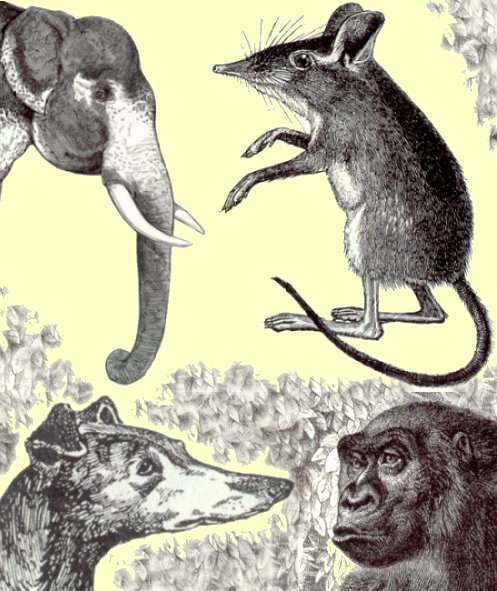A Billion Heartbeats
Today, a billion heartbeats. The University of Houston's College of Engineering presents this series about the machines that make our civilization run, and the people whose ingenuity created them.
Stephen Jay Gould asks us to muse upon the allotted lifetimes of mammals. Gerbils live only a few years, most dogs get beyond twelve, elephants and the big whales live about as long as we do. Now, says Gould, if our reaction is pity for those short-lived species, let's ask just how we should measure the length of a life.
The clock on the wall is misleading. In another episode, I talk about the way smaller creatures have to perceive the passage of time much differently than we do. A small creature, watching you and me, has to see us as though we're moving through molasses.
Think about heartbeats and respiration, says Gould. Your heart or mine might beat seventy-two times per minute, while we breathe eighteen times per minute. The next time you hold your cat, take note of its pulse and breath. Both are much more rapid than yours. A waking cat lives on a faster track than we do.
It turns out that any mammal's heart beats about four times per breath. However, pulse and respiration each decrease roughly as the fourth root of body mass. That means a twenty-five-pound whippet breathes twice as fast as a four-hundred-pound gorilla.
So let us look upon that clock on the wall, not as measuring minutes, but rather heartbeats of the creature watching it. It turns out that all animals live for roughly a billion heartbeats. With a heartbeat clock, our lifetimes would all be roughly the same. Well, not exactly ... we humans are statistical outliers. We mature far more slowly than other creatures and our hearts typically beat around three billion times. However, that's still the same order-of-magnitude as the rest of the animal kingdom.
Gauging life in heartbeats or breaths reveals, once more, how deeply subjective time is. The second law of thermodynamics tells us that we experience time moving only from past to future. That's because the world we perceive is statistically irreversible. And the rate at which we see time moving in only one direction, is dictated by our hearts and lungs.
I watch the clock on my wall -- its second hand ticking at a rate very close to my own heartbeat -- and I better understand the old song about a grandfather's clock,
Ninety years without slumbering
Tick, Tock, Tick, Tock
His life seconds numbering
Tick, Tock, Tick, Tock
And it stopped short -- never to go again
When the old man died.
It is quite wondrous to view all animals as one universal creature scaled up or down. The sizes of brains increases roughly as the three-quarters power of body mass. The cross-sectional area of a leg increases as the mass. We may be statistical outliers, we humans. But it's a lot harder to put on airs when we can see ourselves as scaled-up cats, or scaled down elephants. And, at the same time, I also read in that a fine dimension of hope.
I'm John Lienhard, at the University of Houston, where we're interested in the way inventive minds work.
(Theme music)
S. J. Gould, The Panda's Thumb: More Reflections in Natural History. New York: W. W. Norton & Company, Inc. 1980. Gould deals with many of these issues here, but see especially, Chapter 8.
For more on these issues, see Engines episodes 1407, 1498, 1560, and 1564.
